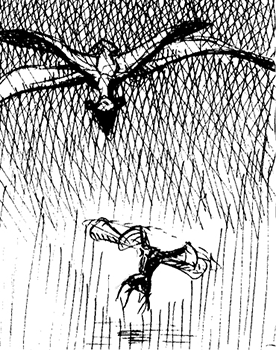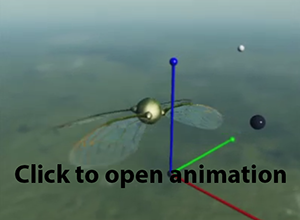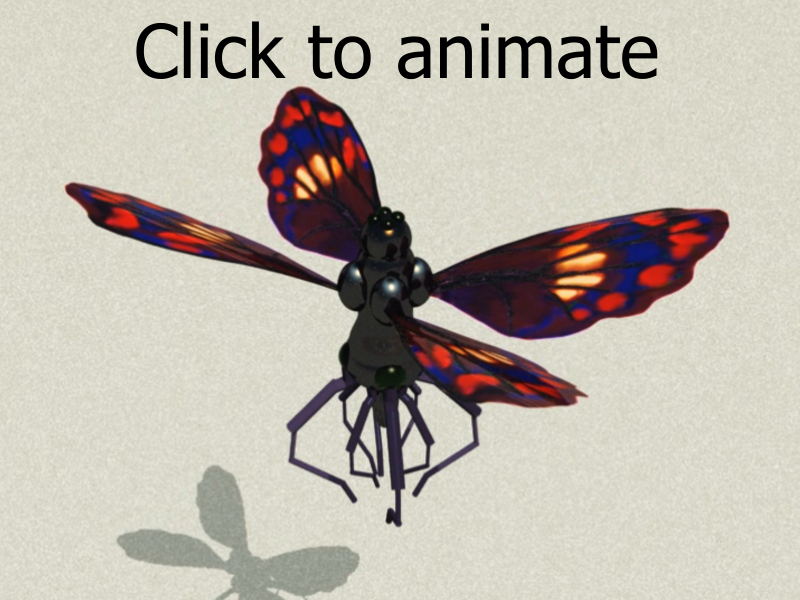

|
The sketch on the right is one of the earliest ones to show a tetrapter. Well, they used to be called 'tetropters', but the 'Naming Authority' decides that that was a mistake, and now they should be called 'tetrapters'. But old habits do not die easily, so you may still encounter 'tetropter'...
There is not much detail to be seen, but the impression is that of an animal moving a bit like a helicopter, and that is indeed what tetropters look like. They have four wings, just like the tetrapterate flyer coming up to the tetropter, but there the similarity ends. Tetrapterates are similar to birds, but with four wings of course, and their wings are built of bone, muscles and subcutaneous bubbles. In contrast, tetropters are much smaller, insect-like, and their wings are membranes. The most important difference is in the mode of flight: tetrapters are radially built animals and have four wings that each beat clockwise as well as counterclockwise. Here is more about tetrapter flight. They also have a unique way of walking. At first sight, you would think that they walk like spidrids, that after all also have eight radial legs. But tetrapters divided their eight legs into two groups of four, with one set of smaller legs that move inside the circle of the larger ones. The two sets resemble the front and hind legs of four-legged animals, in that they have a different anatomy. |

|
|
Here is a more developed animation, showing a nondescript sphere, but moving about as a tetrapter might. Tetropters are excellent at hovering flight and they are extremely manoeuvrable. |

|
|
This tetrapter uses something more like 'rowing', in which the wings beat down over a considerable distance. The result is a bit like an oar pushing gainst water. |

|